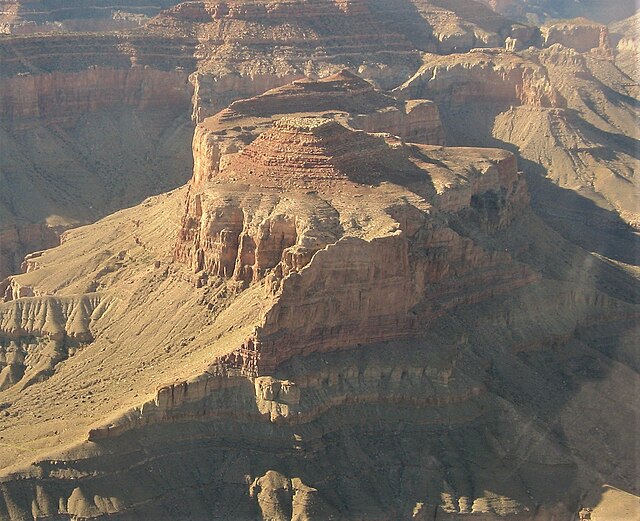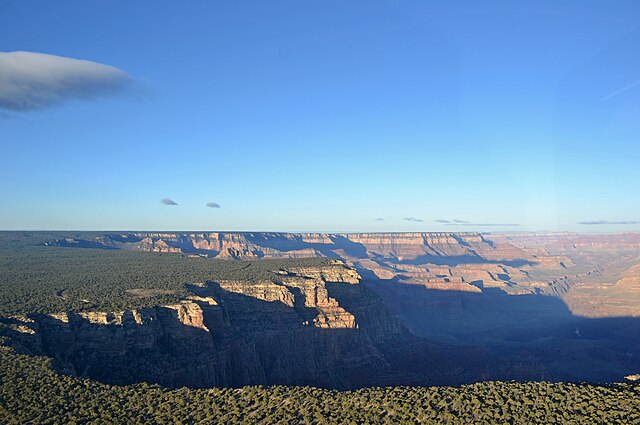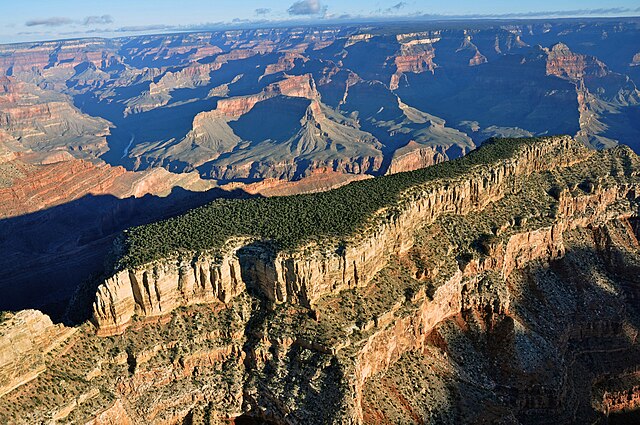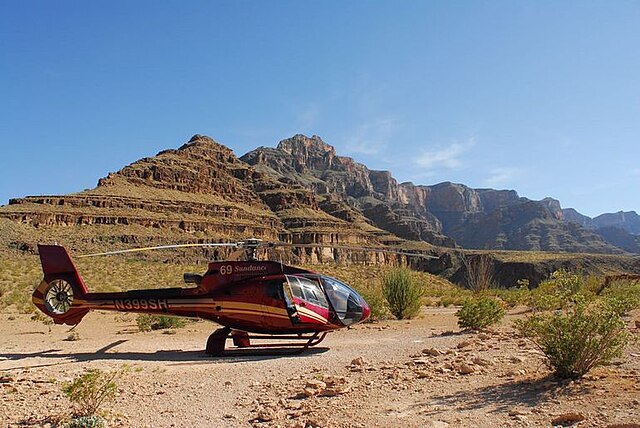Have you ever wondered what it feels like to soar above one of the world’s most magnificent natural wonders? Grand Canyon helicopter tours offer an experience that transforms your perspective of this geological masterpiece, literally and figuratively. When you’re floating hundreds of feet above the Colorado River, watching the canyon walls stretch endlessly in every direction, you’ll understand why millions of visitors choose this aerial adventure each year.
The Grand Canyon isn’t just a hole in the ground – it’s a testament to the power of time and water, carved over millions of years into something that photographs simply can’t capture. But here’s the thing: even standing on the rim doesn’t give you the full picture. You need to get up there, above it all, to truly grasp the scale and beauty of this natural wonder.
Whether you’re planning your first visit to Arizona or you’re a seasoned Grand Canyon enthusiast looking for a new perspective, helicopter tours offer an unmatched way to experience this UNESCO World Heritage site. From quick 30-minute flights to comprehensive half-day adventures, there’s a helicopter tour that fits every budget, schedule, and adventure level.
Salt River Tubing – Arizona’s Coolest Summer Adventure
Why Choose a Helicopter Tour of the Grand Canyon?
Think of a helicopter tour as getting VIP access to nature’s greatest show. While millions of people visit the Grand Canyon each year, most only see it from designated viewpoints along the rim. That’s like watching a movie through a keyhole – you’re missing the full spectacle.
Unparalleled Aerial Views
When you’re in a helicopter, the entire canyon becomes your viewpoint. You’ll witness geological formations that are invisible from ground level, spot wildlife in their natural habitat, and see how the Colorado River has carved its serpentine path through solid rock over millennia. The play of light and shadow across the canyon walls creates a constantly changing masterpiece that ground-based visitors simply can’t experience.
From above, you can see how different rock layers tell the story of Earth’s history, each stripe representing millions of years of geological time. The Vishnu Schist at the bottom, nearly two billion years old, looks almost black from the air, while the younger Kaibab Limestone at the top gleams white in the desert sun.
Time-Efficient Sightseeing
Let’s be honest – hiking the Grand Canyon takes serious time and physical preparation. The Bright Angel Trail to the Colorado River and back is a full-day commitment that requires excellent physical condition. A helicopter tour, on the other hand, can show you more of the canyon in one hour than you could see in several days of hiking.
This efficiency is particularly valuable if you’re visiting Las Vegas or Phoenix and want to include the Grand Canyon in your itinerary without dedicating multiple days to the experience. Many helicopter tours include hotel pickup and drop-off, making it a seamless addition to your vacation plans.
Types of Grand Canyon Helicopter Tours Available

Not all helicopter tours are created equal, and the Grand Canyon offers several distinct experiences depending on which rim you choose as your departure point. Each area provides unique perspectives and varying levels of access to the canyon’s most spectacular features.
South Rim Helicopter Tours
The South Rim is the most accessible and popular area of the Grand Canyon, open year-round and home to the Grand Canyon Village. South Rim helicopter tours typically offer the most comprehensive views of the canyon’s most famous landmarks, including the Bright Angel Trail, Phantom Ranch, and the confluence of the Colorado and Little Colorado Rivers.
These tours usually range from 25 to 50 minutes and provide excellent value for money. The South Rim’s elevation of about 7,000 feet means cooler temperatures and different vegetation compared to other areas, creating a diverse landscape that’s particularly stunning from above. You’ll see ponderosa pine forests giving way to desert scrub as you descend toward the canyon floor.
West Rim Helicopter Tours
The West Rim, located on the Hualapai Indian Reservation, offers perhaps the most adventurous helicopter experiences. This is where you’ll find tours that actually land on the canyon floor, allowing you to step out and explore areas that are otherwise accessible only to serious hikers and river rafters.
West Rim tours often include landing at Grand Canyon West, where you can walk on the famous Skywalk – a glass bridge extending 70 feet beyond the canyon rim. Some tours combine helicopter flights with boat rides on the Colorado River, creating a multi-dimensional Grand Canyon experience that’s impossible to replicate elsewhere.
North Rim Helicopter Tours
The North Rim offers the most remote and exclusive Grand Canyon helicopter experience. This area receives only about 10% of the total Grand Canyon visitors, partly because it’s more difficult to reach and partly because it’s closed during winter months due to heavy snowfall.
Seasonal Considerations for North Rim Tours
North Rim helicopter tours operate primarily from May through October, when weather conditions are favorable and the rim facilities are open. The North Rim sits at about 8,000 feet elevation, making it cooler and more heavily forested than other areas. From a helicopter, you’ll see dramatic differences in vegetation and wildlife, including areas where aspen trees create golden displays in fall.
The isolation of the North Rim means fewer crowds and a more pristine wilderness experience. Helicopter tours from this area often showcase the canyon’s deepest and most colorful sections, including views of Bright Angel Point and the Transept Canyon.
Top Helicopter Tour Companies and Routes
Choosing the right helicopter tour company can make the difference between a good experience and an unforgettable one. The Grand Canyon helicopter tour industry includes several established operators, each with their own strengths and specialties.
Papillon Grand Canyon Helicopters
Papillon has been operating Grand Canyon helicopter tours since 1965, making them one of the most experienced companies in the business. They operate from both Las Vegas and Grand Canyon locations, offering everything from quick scenic flights to full-day adventures that include multiple landing sites.
What sets Papillon apart is their fleet of specially designed helicopters with enlarged windows and stadium-style seating, ensuring every passenger gets optimal views. Their tours often include champagne picnics on the canyon floor and stops at Native American cultural sites, adding cultural depth to the scenic experience.
Maverick Helicopters
Maverick Helicopters focuses on luxury experiences with a fleet of ECO-Star helicopters designed specifically for sightseeing. These aircraft feature 180-degree wraparound windows, individual headsets with digital noise cancellation, and climate-controlled cabins for maximum comfort.
Their Grand Canyon tours are known for comprehensive route coverage and professional narration that explains the geological and cultural significance of what you’re seeing. Maverick’s tours often include multiple perspectives of famous landmarks, circling key features to ensure everyone gets perfect photo opportunities.
Grand Canyon Helicopters
As one of the oldest helicopter tour operators in the area, Grand Canyon Helicopters offers both budget-friendly and premium options. Their tours depart from Grand Canyon National Park Airport and focus primarily on South Rim experiences, though they also offer combination tours that include ground transportation to multiple viewpoints.
Their pilots are known for their extensive knowledge of Grand Canyon geology and history, providing educational commentary that enhances the visual experience. They offer various tour lengths, from quick 25-minute overflights to comprehensive 45-minute tours that cover major canyon highlights.
What to Expect During Your Helicopter Tour

Understanding what happens before, during, and after your helicopter tour helps you prepare mentally and physically for this unique experience. Most first-time passengers have questions about everything from motion sickness to photography opportunities.
Pre-Flight Preparation
Your helicopter tour experience begins well before you leave the ground. Most companies require passengers to arrive 30-45 minutes before departure for check-in, safety briefing, and weight distribution calculations. Yes, you’ll need to provide your weight – this isn’t about judgment, but about aircraft balance and safety.
During the safety briefing, you’ll learn about helicopter-specific safety features, emergency procedures, and communication protocols. Don’t worry if you’ve never been in a helicopter before – the briefing covers everything you need to know, and the staff are experienced in helping nervous first-time flyers feel comfortable.
You’ll also receive headsets that allow you to hear the pilot’s narration and communicate with other passengers. These headsets are essential because helicopter engines are quite loud, and without them, you’d miss the educational commentary that makes these tours so much more than just sightseeing flights.
In-Flight Experience
Once you’re airborne, the Grand Canyon unfolds beneath you in ways that ground-based viewing simply cannot match. Most helicopters cruise at speeds between 80-120 mph and fly at altitudes that provide optimal viewing while maintaining safe distances from canyon walls and other aircraft.
The pilot serves as both navigator and tour guide, pointing out geological formations, wildlife spotting opportunities, and historical sites. You’ll learn about the different rock layers, each representing different geological eras, and how the Colorado River continues to carve the canyon deeper each year.
Safety Features and Protocols
Modern tour helicopters incorporate multiple safety systems and protocols developed over decades of commercial operation. All aircraft undergo rigorous maintenance schedules that exceed federal requirements, and pilots must meet stringent experience and training standards specific to Grand Canyon operations.
The Federal Aviation Administration maintains special flight rules for Grand Canyon airspace, including designated flight corridors and altitude restrictions designed to minimize noise impact on ground visitors and wildlife while maximizing safety for aircraft operations.
Pricing and Booking Information
Grand Canyon helicopter tour pricing varies significantly based on tour length, departure location, and included amenities. Understanding the cost structure helps you choose the best option for your budget and interests.
Cost Breakdown by Tour Type
South Rim helicopter tours typically range from $199 to $399 per person for flights lasting 25-50 minutes. These tours offer excellent value because they provide comprehensive canyon coverage without the additional transportation costs associated with more remote departure points.
West Rim tours, particularly those departing from Las Vegas, range from $299 to $699 per person. The higher prices reflect longer flight times (often 90 minutes or more), ground transportation from Las Vegas hotels, and additional experiences like canyon floor landings or Skywalk access.
Premium tours that include multiple landings, gourmet meals, or overnight components can range from $799 to $1,500 per person. These comprehensive experiences often include hotel accommodations, ground transportation, and multiple activities beyond the helicopter flight itself.
Best Times to Book for Deals
Like most tourism activities, Grand Canyon helicopter tours offer the best deals during shoulder seasons and weekdays. November through March (excluding holidays) typically offers the lowest prices, though weather can be more variable during these months.
Booking 30-60 days in advance often provides better pricing than last-minute reservations, especially during peak season (April through October). Many companies offer package deals that combine helicopter tours with other Grand Canyon activities or Las Vegas attractions, potentially providing significant savings for multi-day itineraries.
Essential Tips for First-Time Helicopter Tour Passengers
Preparing properly for your helicopter tour ensures you get the maximum enjoyment from this unique experience. Small details in preparation can make a big difference in your comfort and photo opportunities.
What to Wear and Bring
Dress in layers because temperatures can vary significantly between departure locations and flight altitudes. Even in summer, it can be quite cool at higher elevations, while canyon floor areas remain quite warm. Comfortable, secure shoes are essential – no flip-flops or loose-fitting footwear.
Bring sunglasses and a hat, as the sun’s reflection off canyon walls can be intense. However, avoid loose items that could blow away or interfere with aircraft operations. Most helicopters have secure storage areas for small bags and personal items during flight.
Leave large bags and unnecessary items at your hotel or in provided storage areas. Weight and space limitations on helicopters mean you should bring only essential items like cameras, phones, and personal medications.
Photography Tips for Aerial Shots
Helicopter photography presents unique opportunities and challenges. The key is to be prepared before takeoff because you won’t have time to fiddle with camera settings once you’re in the air and the amazing views start appearing.
Set your camera to a fast shutter speed (at least 1/500th second) to avoid blur from aircraft vibration and movement. If possible, use a wide-angle lens to capture the expansive canyon views, but also have a zoom lens ready for detailed shots of specific formations or wildlife.
Avoid using flash, which can create reflections on aircraft windows and potentially interfere with pilot vision. Most modern cameras and phones perform well in the bright conditions typical of Grand Canyon flights, so trust your equipment’s automatic settings if you’re not comfortable with manual controls.
Comparing Helicopter Tours vs. Other Grand Canyon Experiences
While helicopter tours offer unique advantages, understanding how they compare to other Grand Canyon experiences helps you make informed decisions about how to spend your time and budget at this natural wonder.
Ground-based viewing from rim trails and visitor centers costs only the National Park entrance fee ($35 per vehicle for seven days) but limits you to designated viewpoints and hiking trails. These experiences offer intimate encounters with canyon details and wildlife that you might miss from aircraft, plus unlimited time to absorb the scenery.
Hiking into the canyon provides physical challenges and rewards that no other experience can match, including access to areas invisible from rim viewpoints and aircraft flight paths. However, serious canyon hiking requires excellent physical condition, proper equipment, and significant time investments – often full days for meaningful distances.
River rafting through the Grand Canyon offers ground-level perspectives of the canyon’s geological story and access to side canyons and archaeological sites that are invisible from above. Multi-day river trips provide the most comprehensive Grand Canyon experience but require major time and budget commitments.
Weather Considerations and Seasonal Best Times

Grand Canyon weather varies dramatically by elevation, season, and specific location within the canyon system. Understanding these patterns helps you choose optimal times for helicopter tours and prepare appropriately for conditions.
Spring (March through May) offers moderate temperatures and excellent visibility, though afternoon thunderstorms can develop quickly. This season provides ideal conditions for helicopter tours, with comfortable temperatures at all elevations and minimal weather-related flight cancellations.
Summer (June through August) brings hot temperatures, especially at lower elevations, but also the most stable flying conditions. Early morning and late afternoon tours are most comfortable during summer months, avoiding the intense midday heat that can affect both passenger comfort and aircraft performance.
Fall (September through November) combines excellent flying weather with spectacular scenery as vegetation changes color. This is often considered the optimal time for Grand Canyon helicopter tours, offering mild temperatures, clear skies, and stunning photographic opportunities.
Winter (December through February) presents the most variable conditions, with possible snow at higher elevations and occasional flight cancellations due to weather. However, winter tours can provide unique experiences, including snow-covered canyon rim contrasting with desert colors at lower elevations.
Safety Record and Regulations
Grand Canyon helicopter tour safety has improved dramatically over the past two decades through enhanced regulations, improved aircraft technology, and more stringent pilot training requirements. Understanding current safety standards helps address common concerns about helicopter tour safety.
The Federal Aviation Administration implemented comprehensive Grand Canyon helicopter tour regulations following extensive safety reviews in the 1990s and 2000s. These regulations include mandatory flight path corridors, altitude restrictions, aircraft maintenance requirements, and pilot experience standards that exceed general aviation requirements.
Modern tour helicopters incorporate multiple redundant safety systems, including dual flight controls, emergency locator transmitters, and comprehensive emergency equipment. All aircraft undergo daily pre-flight inspections and regular maintenance schedules that far exceed manufacturer recommendations.
Pilot training for Grand Canyon operations includes specific requirements for mountain flying, emergency procedures, and local weather pattern recognition. Most tour pilots have thousands of hours of flight experience and receive ongoing training in Grand Canyon-specific operating procedures.
Statistical analysis shows that commercial helicopter tours have safety records comparable to commercial airline operations when properly regulated and operated. The combination of experienced pilots, well-maintained aircraft, and conservative operating procedures makes helicopter tours one of the safest ways to experience the Grand Canyon’s aerial perspectives.
Conclusion
Grand Canyon helicopter tours offer an unparalleled way to experience one of the world’s most magnificent natural wonders. Whether you choose a quick South Rim overflight or an elaborate West Rim adventure with canyon floor landings, you’ll gain perspectives and memories that ground-based visits simply cannot provide.
The investment in a helicopter tour pays dividends in time efficiency, unique photographic opportunities, and the sheer awe of seeing the entire Grand Canyon system from above. While costs vary significantly based on tour type and included amenities, the experience consistently ranks among travelers’ most memorable Grand Canyon activities.
Remember that preparation enhances enjoyment – dress appropriately, bring proper camera equipment, and arrive with realistic expectations about weather and flight conditions. Choose reputable tour operators with strong safety records and comprehensive insurance coverage.
Most importantly, approach your helicopter tour with an open mind and sense of adventure. The Grand Canyon has inspired millions of visitors over the decades, but seeing it from the air adds dimensions that even the most experienced canyon enthusiasts find surprising and moving. Whether this is your first Grand Canyon visit or your fiftieth, a helicopter tour offers perspectives that will change how you understand this natural masterpiece.
Frequently Asked Questions
Q1: Are Grand Canyon helicopter tours safe for people afraid of heights?
A1: Yes, most people with mild height anxiety do well on helicopter tours because you’re enclosed in a secure cabin rather than exposed to open air. The gradual takeoff and professional pilot commentary help distract from height concerns. However, if you have severe acrophobia, consider starting with a shorter tour to test your comfort level.
Q2: What happens if weather cancels my helicopter tour?
A2: Reputable tour companies offer full refunds or free rescheduling for weather-related cancellations. Grand Canyon weather can change quickly, so companies prioritize safety over keeping schedules. Book flexible tours when possible, and consider travel insurance for non-refundable travel expenses if weather disrupts your plans.
Q3: Can I bring my camera and phone on a helicopter tour?
A3: Absolutely! Photography is encouraged on helicopter tours, and most aircraft are designed with optimal window positioning for cameras. Secure your devices with wrist straps, and avoid using flash photography. Many companies provide photo services if you prefer professional shots of your experience.
Q4: How far in advance should I book a Grand Canyon helicopter tour?
A4: Book 30-60 days in advance for best pricing and availability, especially during peak season (April-October) and holidays. Last-minute bookings are sometimes possible but may have limited tour options and higher prices. Popular tours like canyon floor landings book up quickly during busy periods.
Q5: What’s the minimum age for Grand Canyon helicopter tours?
A5: Most companies accept children as young as 2 years old, though infants under 24 months may fly free on a parent’s lap depending on aircraft weight limitations. Children must be accompanied by adults and may need special safety equipment. Some tour types with canyon floor landings have higher minimum age requirements for safety reasons.

